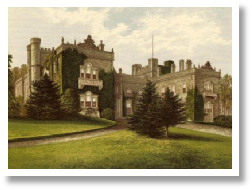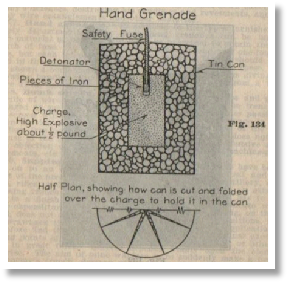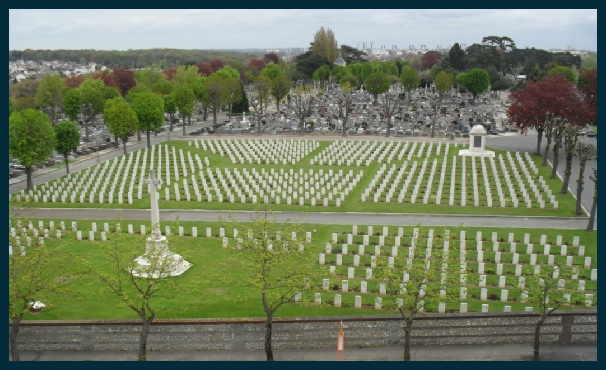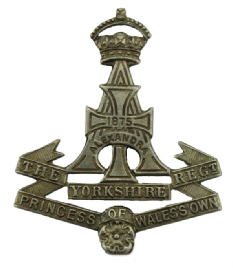Copyright © All rights reserved.



Aaron Jemmeson
Born in the last quarter of 1892, Aaron Shipley Jemmeson’s birth was registered in Malton. He was the son of Aaron and Ann (nee Shipley) Jemmeson – Aaron senior died in the third quarter of 1892, shortly before his birth.
In 1901 Ann and the youngest five of her thirteen children together with one grandson were living at 119 Town Street, Old Malton, and this is the last record we have of Aaron Jemmeson.
1901 Census – resident at 119 Town Street, Malton
JEMMESON, Ann, Head, Widow, F, 53, Farmer, Senby Yorkshire,
JEMMESON, George F, Son, Married, M, 27, Farmer Son, Burdale Yorkshire,
JEMMESON, Catherine J, Daughter, Single, F, 18, Housemaid Not Domestic, Speeton Yorkshire,
JEMMESON, Mariam J, Daughter, Single, F, 14, , Malton Yorkshire,
JEMMESON, Florence A, Daughter, , F, 11, , Malton Yorkshire,
JEMMESON, Aaron S, Son, , M, 8, , Malton Yorkshire,
JEMMESON, Harold, Grand Son, , M, 7, , Malton Yorkshire,
However according to the Malton Messenger’s obituary, he was for many years a member of the choir at St Mary’s Church, Old Malton.
There does not appear to be any record of Aaron’s military service. However a James Jemmeson is listed as serving with the Yorkshire Regiment (Private JAMES JEMMESON 2001, 4th Bn., Yorkshire Regiment died aged 22 on 02 June 1915. Son of Aaron and Ann Jemmeson, of 74, Commercial St., Norton, Malton, Yorks. Native of Old Malton.)

The problem here is that there is no birth record for James who would have been the same age as Aaron. Could Aaron, who was clearly named after his father, have changed his name by the time he joined up?
The answer to this question may be answered by the 1911 census where we find a James Jemmeson aged 20 and born in York, working as a footman in the household of the Marquess of Zetland at Aske House in Richmond, NRY. It was not unknown for employers to insist on the adoption of what was seen as a “suitable” name by their employees and James was a particularly common one for this purpose. So it is clear that this James is actually our Aaron, which would fit with an enlistment at Northallerton rather than Malton.
According to the “Messenger” he was a young man of fine physique standing over six foot and a letter to his mother from the Marquess of Zetland spoke of him as a respected member of the household.
James enlisted in the fourth Battalion of the Yorkshire Regiment, a territorial unit drawn from the North-
By September the local 4th Battalion moved to Newcastle where the whole of the Northumbrian Division was billeted. It would not move to the Continent until the following April and there followed a period of intense training. About this time the War Office announced that if 80% of the Battalion were to volunteer for service abroad, it would be permitted to embark as a unit. 90% did so and such was the enthusiasm to fight for the cause, another two hundred recruits were ready and waiting to join.
On 17th April the Battalion left Newcastle at 9 am bound for Folkestone and around midnight they were taken across the Channel to Boulogne. After arriving at Boulogne about 2 am, they spent a very cold night camped on nearby hills. Leaving Boulogne at 10 pm, they marched to Desveen, from where the French Railways took them to Cassel, the Officers riding in first class carriages, NCOs and men in cattle wagons behind. After arriving at Cassel at 5 in the morning, they marched to Godwaersvelde, where they were billeted in surrounding farm buildings. Here over 4 days the 4 Battalions of the 150th Brigade of the 50th Division gathered.
They had expected some time for familiarisation and training but found themselves precipitated into the horrors of the Second Battle of Ypres and the first German attacks of chlorine gas. On 23rd April at about 1 pm the whole Battalion was embussed to Poperinghe, from where they marched to the Yser Canal.
Marching towards the unknown, past "gaping shell holes, broken-
The 5th Yorks Bn crossed the Canal, but the 4th remained on the Western side. All they knew was that the Germans had pressed their attack on Ypres, the Canadians had suffered many casualties from the poison gas and there was a wide gap in the line to the North East of Ypres. All the morning the Battalion were being shelled at intervals. At mid-
The Yorkshires proceeded under fire until coming level with the village of Fortuin, where they encountered chiefly from the left flank shelling and a certain amount of long range machine gun fire. The noise of fighting could be heard from the direction of St Julien, which seemed to be occupied in considerable force, with the enemies advanced parties holding the banks of a muddy stream some 500 yards south of the village. They saw a few men retiring. Two Companies now advanced by rushes and the Germans were forced into falling back on St Julien. Both Battalions lost heavily while crossing the open ground, but the Germans were driven back into St Julien. It was here they got the name of the "Yorkshire Gurkhas" from the Royal Irish Fusiliers. General Sir H Plumer, commanding II Corps sent a special messenger to thank the 4th Yorks for the good work that they had done.
On 28th April. the Battalion was ordered to relieve the 5th Yorks Bn in trenches on the Northern side of the Fortuin to Passchendaele road but they had a rough time getting forward and did not get there until the 30th. The march to the trenches is described as going through hell on earth, by now strewn with dead animals and bits of everything recognisable in the way of equipment. They had to pass through the village of St Jean which was "utterly destroyed and slightly more objectionable than Ypres; church gutted, graveyard shelled and a heap of coffins and battered headstones." The trenches had been quickly made and provided poor protection -
On 2nd May the Germans kept up a constant hail of shells. Then once again they released chlorine gas. It was now less of a
surprise and the troops had improvised respirators "made of cotton-
A Sergeant of the 4th Yorkshires, wrote:-
"...The worst day we had was Sunday, when the Germans started to advance. At about 4.30 their artillery commenced to shell us and they didn't half send the shells flying. Then the Germans came out of their trenches and we let them have it. We kept firing away but then they sent their gas shells among us.
Oh dear! the smell is fearful. The poor fellows in the thick of it are absolutely helpless It gives one a horrible feeling and one hardly knows what he is doing.”

For most of May the 4th Yorkshires were out of the line in huts on the west side of Ypres but by 23rd they joined the 9th Lancers defending the position astride the Menin Road at Hooge. The History of the 50th Division comments "Ten months of the War had passed and still trench warfare was in its infancy. The enemy better prepared for static warfare, was well provided with trench mortars, hand and rifle grenades and rifles with telescopic sights for sniping.
Our trench weapons were woefully inadequate. The trench mortars we were using were either hastily improvised weapons or centuries old. Some were of iron, other of brass; all at first more dangerous to the firers than to the enemy. Hand grenades were similarly primitive and of several improvised patterns.
Recipe for "jam-
On the 24th the Germans again released chlorine gas that formed great clouds forty feet high and these drifted with the wind onto the British lines.
It was said the gas was experienced some 20 miles behind the front and what the effect was on those immediately opposite the release cannot be imagined. Many were overcome by the fumes before they could fit their primitive respirators, but when the Germans attacked they were met with a hail of rifle and machine gun fire that drove them back. The bombardment continued until 7.30 am, but the line held. The Battalion began to arrive back at the hutments on the West side of Ypres. “At night the remainder of the garrison of our trenches were relieved and straggled back. The men were nearly exhausted. They had been at the centre of the gas and all suffering from it more or less. The men were lying about being sick at intervals.”
From the 26th May the remains of the 4th Battalion stayed at the huts recovering, although on the 26th they began sending working parties to the trenches, the first party being 150 men, which was all the men in the Battalion able to move.
On the 2nd of June 1915, as a result of the gas attacks of 24th and 25th May, James (Aaron) Jemmeson died of gas poisoning at Le Havre Hospital and was buried at Ste Marie Cemetery, Le Havre. A memorial service was held as part of evensong at Old Malton on 3rd July 1915.

